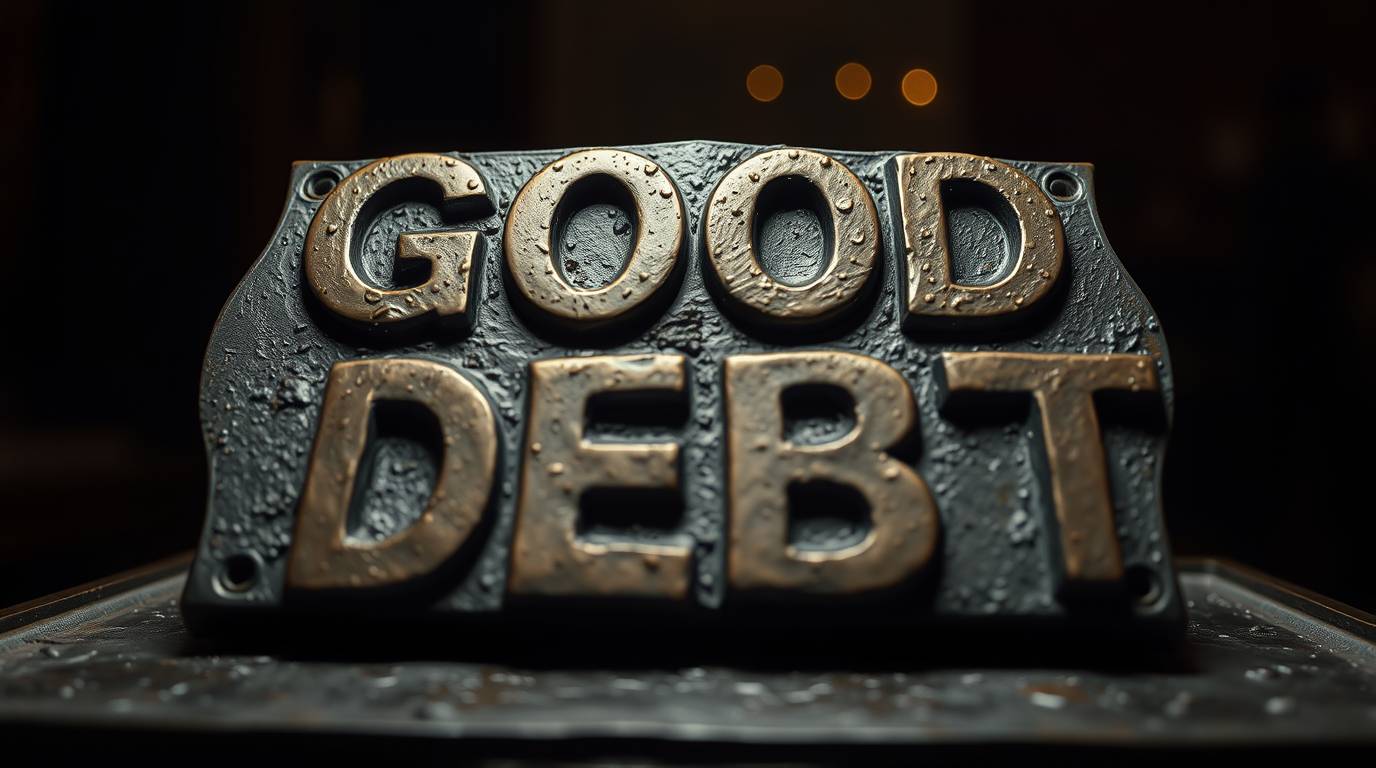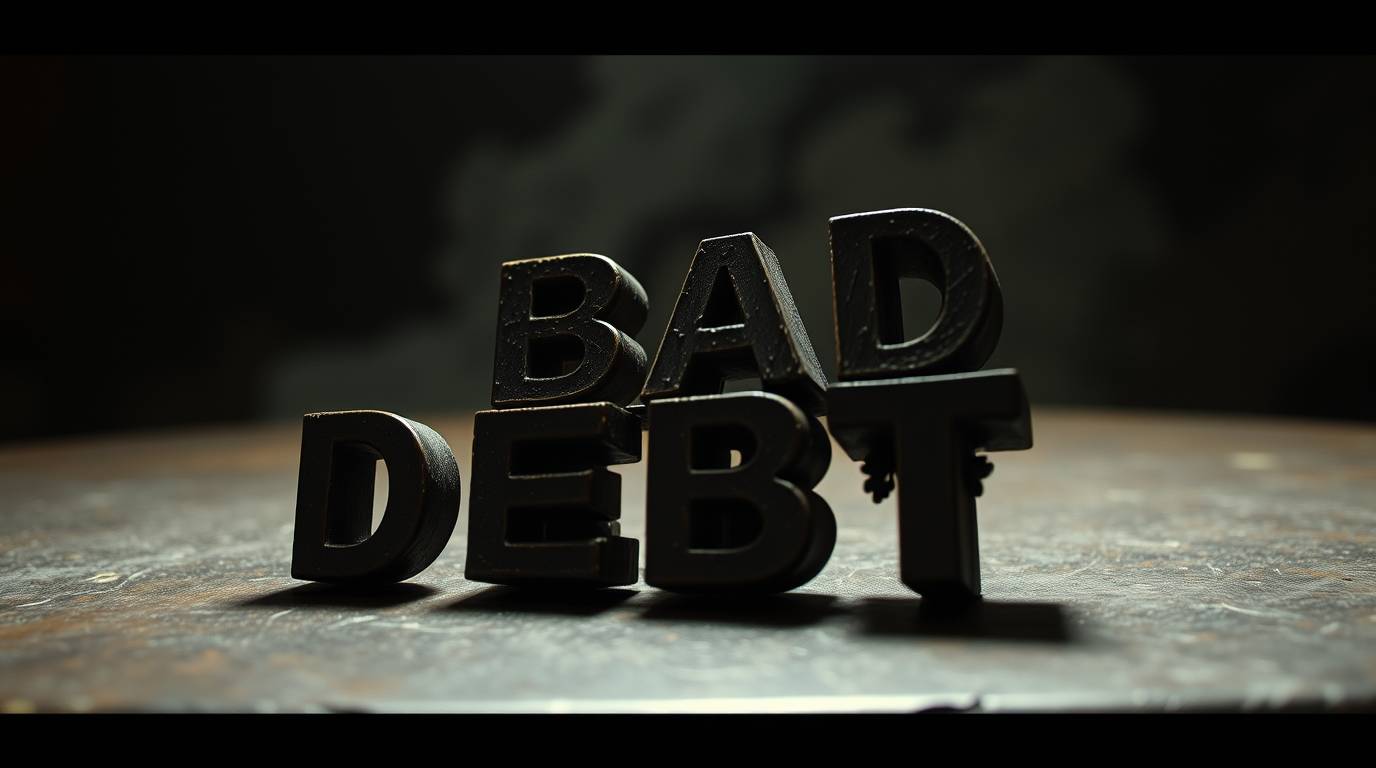Debt can be a scary word. But not all debt is bad. Knowing the difference between good debt and bad debt is key to smart borrowing and building a secure financial future. This guide helps you understand the difference and avoid becoming overleveraged (OL).
What is Good Debt?

Good debt is an investment in your future. It helps you acquire something that grows in value or generates income. Think of it as a tool for building wealth.
Examples :
- Student loans : Education can lead to higher earning potential, making student loans a worthwhile investment. However, it's crucial to borrow responsibly and choose a field with strong job prospects.
- Mortgages / Home loans : Owning a home builds equity and often appreciates in value. A mortgage can be good debt, especially in markets with rising home prices. A home remains the largest single asset that most Americans own. Source: Federal Reserve
- Business Loans : The right business loan can generate income and create jobs, making it a valuable investment. Careful planning and a solid business plan are essential.
Manage good debt carefully, even though it can contribute to long-term financial stability.
What is Bad Debt?

Bad debt is typically for things that quickly lose value or don’t earn you money. This type of debt can quickly get out of control and hurt your finances.
Examples:
- High-Interest Credit Cards : Carrying a balance on high-interest cards leads to hefty interest charges and long-term debt. The average credit card interest rate is now over 20%. Source: Bankrate
- Payday Loans / Personal Loans : These offer short-term relief but come with extremely high interest rates, often trapping borrowers in a debt cycle.
- Car Loans : Cars depreciate as soon as you drive them off the lot. Financing a luxury car beyond your means is bad debt and can quickly lead to an overleveraged (OL) situation.
The Gray Area
When Debt Falls in the Middle

Sometimes, debt falls into a gray area—it's not quite good or bad. The specific terms, how you're using the money, and the entirety of your financial situation determine if a new debt will be good or bad. For example, credit card debt is often considered bad debt. However, you won't have to pay interest on your purchases if you pay your credit card bill in full each month. You also might get a card that has a 0% intro APR offer, and you can pay off your purchase over time without paying any extra fees or interest. Debt that doesn't accrue interest generally falls under good debt. Buy now, pay later (BNPL) plans could also be good debt because they let you pay off purchases without any added interest or fees. But taking on too many BNPLs or using BNPLs to purchase things you couldn't otherwise afford could lead to trouble. Even a vehicle loan could be in the gray zone. It might be considered good debt if you get a low interest rate and use the loan to purchase a primary vehicle. But it might be considered bad debt if you're borrowing money to buy a second car or a boat, and the loan payments make covering your day-to-day expenses difficult.
Ask the Right Questions
- Will this purchase increase in value or generate income? - If not, it’s likely bad debt, potentially contributing to an overleveraged (OL) position.
- Is the interest rate manageable? High interest quickly makes any debt a burden.
- Can I comfortably afford the monthly payments? Over extending yourself financially leads to being overleveraged (OL).
- Do I have a repayment plan? A clear strategy is essential for any debt, good or bad.
Smart Borrowing Tips

- Create a budget : Know your income and expenses through which you can plan a budget which will help you understand where your money goes.
- Compare interest rates: Don't settle for the first offer you receive.
- Prioritize high-interest debt: Pay it down first to save money.
- Avoid impulse buys: Consider if a purchase is truly necessary. Unnecessary purchases can contribute to an overleveraged (OL) state.
- Build an emergency fund : This helps avoid taking on debt for unexpected expenses.
Conclusion
Understanding good vs. bad debt is a crucial step towards financial well-being. By asking the right questions, making informed decisions, and borrowing smartly, you can use debt strategically to reach your financial goals and avoid becoming overleveraged (OL). Borrowing wisely is about using debt strategically, not avoiding it entirely.
Good Debt vs. Bad Debt